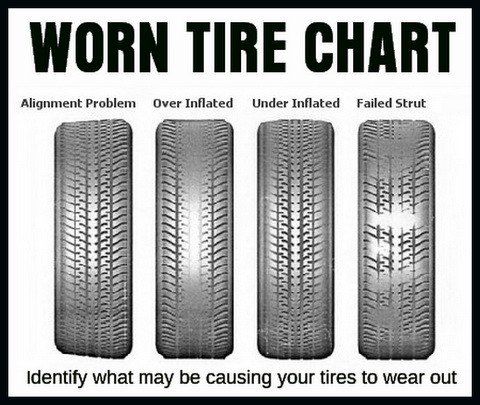For most people, tires are the last part they think about regarding a vehicle. It's one of the crucial components that need frequent inspection, depending on your environment. Over time, you might start to notice some signs that your tires are beginning to degrade. Do tires degrade in the first place? If that's what you're trying to figure out, let's take a deeper look into it!
It wouldn't be surprising to know that, yes, tires do degrade over time. In general, the original tires your vehicle came with should last you about 6-10 years or 50,000 miles. After this period, it's recommended to replace them with a new set. Even when tires are not in use, they do tend to degrade as time goes on. They begin to develop cracks that can compromise the structure of the tire.
So, you might've learned something new in the past few minutes regarding tires. Learning that a tire can degrade regardless of use can raise more concerns. For example, how long can they sit unused? Additionally, you might want to take some time to set the record straight regarding the penny test. If these are some concerns you have, keep reading ahead to find out more.
Before you continue reading, let us say we hope you find the links here useful. If you purchase something through a link on this page, we may get a commission, so thank you!
Let's first go over how long a tire can sit unused. Additionally, we'll go over why the age of the tire matters more than the tread depth. In general, tires can sit unused for 6-10 years. Though, after the six-year mark, an annual inspection will be necessary.
You might ask why that is. After six years, you want to inspect the tires annually to ensure they're still serviceable. It can be confusing. Why does an unused tire need inspection if it wasn't exposed to conditions outside?
Like many other materials, rubber tends to age as time goes on. How quickly it does so depends on several factors. One of the first elements for degrading rubber is oxygen.
How quickly it does so depends on several factors. One of the first elements for degrading rubber is oxygen.
Oxygen is responsible for the degradation of rubber on the inside and outside. Additionally, most tires are inflated with compressed air. Oxygen makes up 21% of compressed air. As a result, the rubber begins to oxidize twice as fast.
Regardless, even when a tire is not in use, it will be exposed to oxygen in any situation. Oxygen makes the particles present in rubber harden and become less flexible. For this reason, you'll begin to notice cracks on the tires after a few years.
Oxygen is not the only element responsible for the degradation of rubber. The other factors to consider are:
They all play a crucial role in how long the rubber from the tires will hold up. A tire typically has a line of defense against UV light. But, as time passes, it loses the ability to stabilize it.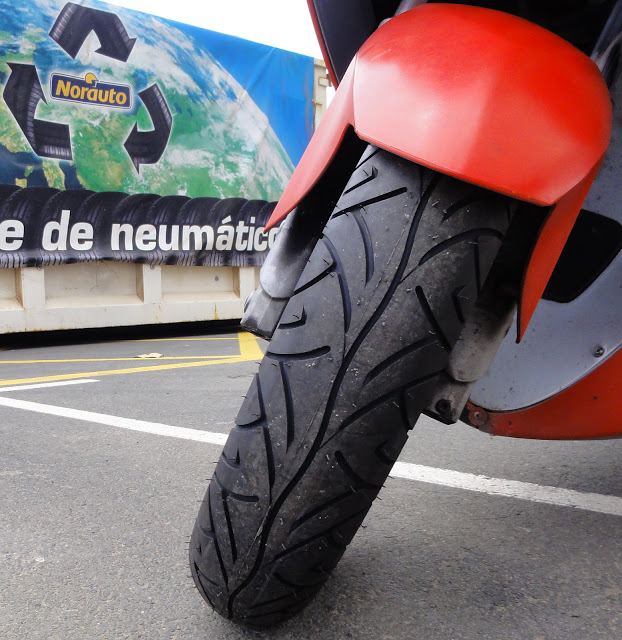 As a result, the tire will eventually become exposed to UV rays.
As a result, the tire will eventually become exposed to UV rays.
Regarding ozone, the type that is destructive towards car tires is a result of manmade pollution. If you're not familiar with what ozone is, it's oxygen with an extra atom in it. It similarly interacts with rubber as oxygen does. Manufacturers also prepare a line of defense to protect against ozone degradation.
But, it's only useful when the tire is in use. When it isn't in use, there's little to no circulation being provided. As a result, it doesn't help slow down the aging process.
The way you store the tires is another crucial aspect to consider. If you keep them in random areas that are not climate-controlled, you risk the potential to expose your tires to heat and humidity. When exposed to both, it makes the degradation process faster.
In general, tires should be in a room that ranges anywhere from 32-77 degrees Fahrenheit. It should also be away from sunlight or any strong artificial light.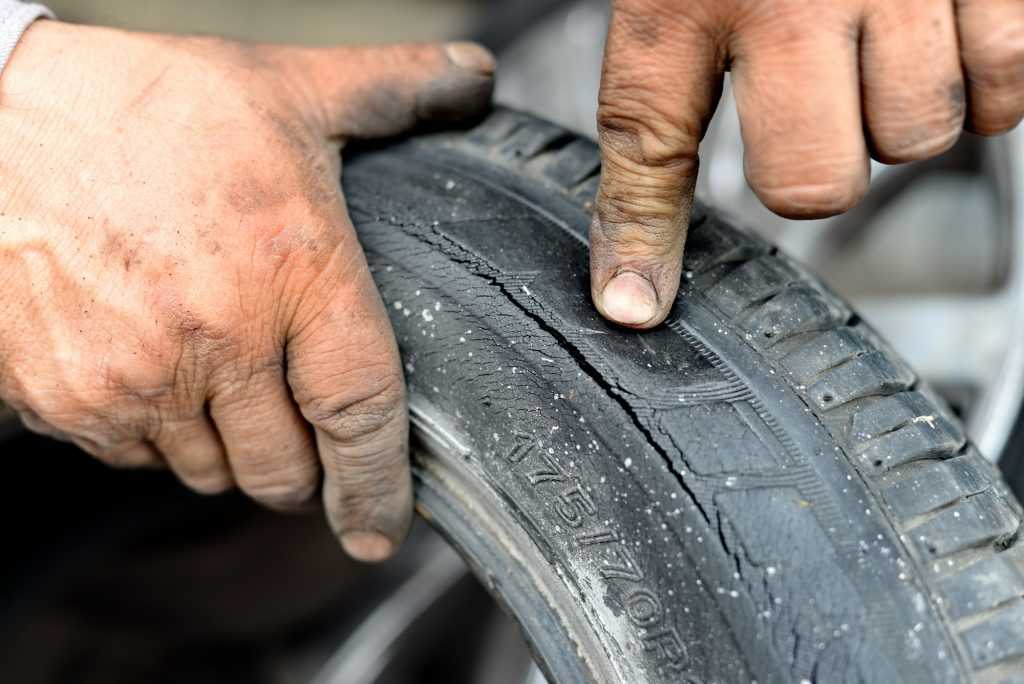 Lastly, it has to be away from equipment that can produce ozone. The list of ozone-producing equipment includes generators, electric motors, fluorescent lamps, and more.
Lastly, it has to be away from equipment that can produce ozone. The list of ozone-producing equipment includes generators, electric motors, fluorescent lamps, and more.
The answer to this question can be a little complicated. It's tricky because there's no official life expectancy for a tire. That's also true for winter tires. For this reason, manufacturers will typically give you a guideline of how long the tire may be able to last.
Regarding winter tires, it depends on how well you stored the tire, what conditions it was exposed to, and much more. In general, manufacturers estimate winter tires can last you about four seasons of winter. In the measurement of time, it can be anywhere from 1-4 years old and still be safe for usage.
Of course, after this timeframe, you'll want to inspect your tires to find any signs of degradation.
The lifespan of car tires depends on the lifestyle of the user. In general, tires can last anywhere from 6-10 years. However, as some suggest, it's more likely that your tires will last you 3-5 years. This timeframe is more realistic if you drive regularly.
In general, tires can last anywhere from 6-10 years. However, as some suggest, it's more likely that your tires will last you 3-5 years. This timeframe is more realistic if you drive regularly.
Still, more factors determine the lifespan of a tire. As we mentioned above, tires can degrade over time. It's a natural process that you won't be able to stop. Though, there's a distinction to be made in this situation.
You might have already guessed it. Tires that are in regular use will become worn over time. On the other hand, tires that aren't used frequently will experience aging. Aging differs from wear regarding the structural integrity of the tire.
As some suggest, tires need to be driven to allow the chemicals in rubber to remain effective. Wear is one aspect that you will already be familiar with. Tires will lose traction over time. In either case, you'll want to replace the tire with a new one as soon as possible.
If you're new to cars or are interested in brushing up your knowledge in tires, you might have heard of the penny test. It's a way to check your tire's tread to know when you should change them. If you can't see the top of Lincoln's head, your tires are still serviceable. However, if you can see the top, you'll need to replace your tires.
It's a way to check your tire's tread to know when you should change them. If you can't see the top of Lincoln's head, your tires are still serviceable. However, if you can see the top, you'll need to replace your tires.
It's a quick way to check how worn your tires are. But, the crucial concern comes in the accuracy of the test. As some suggest, no, the penny test isn't foolproof. Accuracy comes into question when only part of Lincoln's head is covered.
Click here to see this tire depth gauge on Amazon.
In this situation, you'll have to guess when you should replace the tires. For this reason, many recommend buying a tire depth gauge. This way, you can ensure you can get reliable results.
There's a lot to consider when you're deciding if your tires need to be replaced. So, let's go over the steps for checking if it's time to get a new set of tires. To inspect your tires, you'll need to:
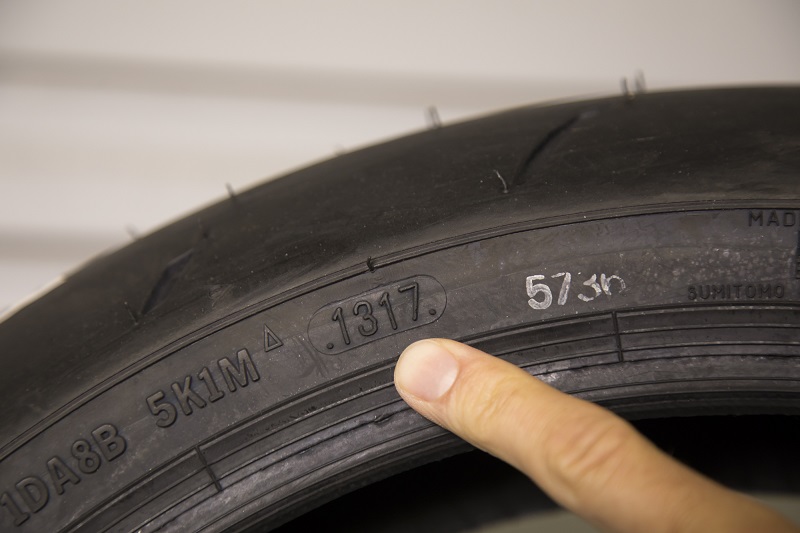 In general, tread bars will sit at a lower depth than your tire treads. If the treads are now level with the bar, it indicates it's time to look for a replacement.
In general, tread bars will sit at a lower depth than your tire treads. If the treads are now level with the bar, it indicates it's time to look for a replacement. 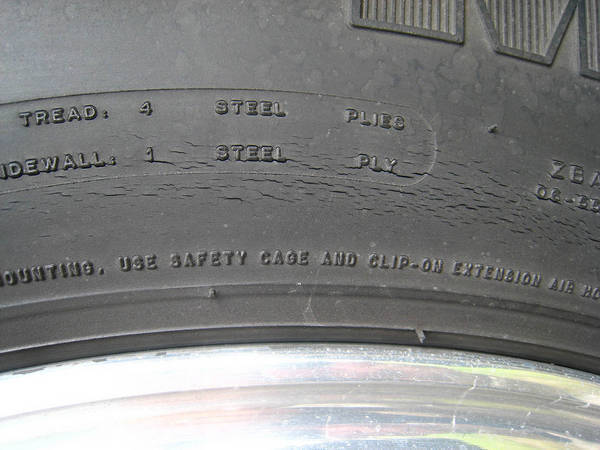 Driving on a tire with bulges or bubbles on the sidewall presents a risk of a blowout or sudden failure.
Driving on a tire with bulges or bubbles on the sidewall presents a risk of a blowout or sudden failure. Sometimes words aren't enough to help. So, for the visual learners out there, here's a quick YouTube video briefly covering what to look for:
Tires play a crucial role in how your car performs on the road. Even when they're not in use, tires degrade. By learning how to identify the problems aging causes, you can ensure you'll be safe on the road. We hope you found the information above helpful!
Before you go, do you have other tire concerns? Did you get a nail stuck in one? If you're wondering how to fix it, check out our post here.
Do you need to drive on low tire pressure? We go over how to do so safely! To find out more, check out our post here. Safe travels!
Tires are expensive to replace and repair, so effective tire storage is important. This guide will show you how to store tires to keep them from dry rotting or deteriorating.
Storing tires can be a frustrating task due to their size and the extra steps needed to keep them in good shape. However, you might not have a choice if you have a set of winter tires for your car. If you’re clueless of where to start, you’re not alone. Many of our storage customers don’t know how to store tires and come to use for advice.
It’s not uncommon to see tires stored outside without so much as a cover, but it’s likely these tires aren’t used on a road vehicle. If they are, their safety has been compromised in a major way. People also keep tires in garages that are exposed to big shifts in temperature.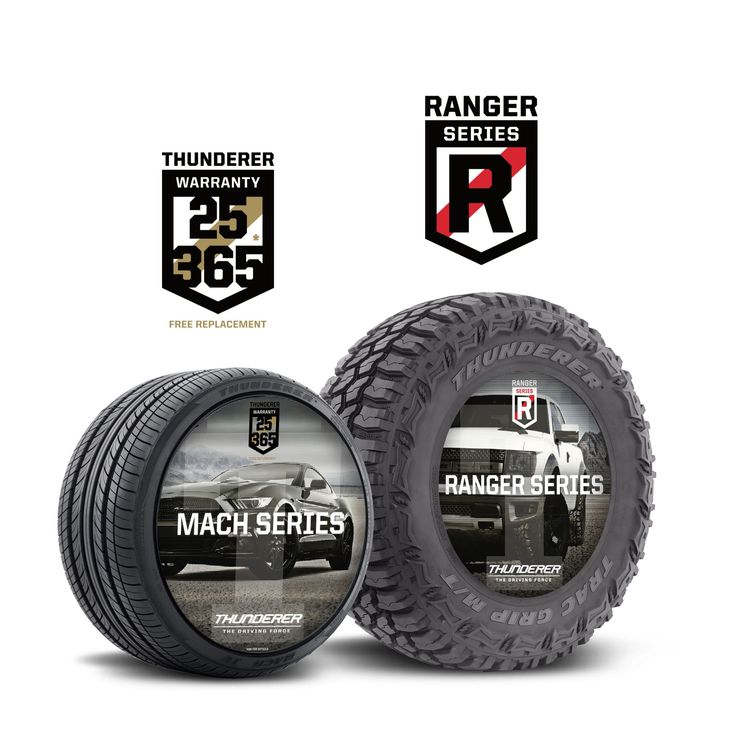 This solution is also not ideal.
This solution is also not ideal.
Tires will degrade eventually, but there are things we can do to delay the process. Tires are sensitive to weather, sun, temperature, and time. The best way to store tires is in a dry, cool environment that will slow down the aging process. Keeping a fresh set of tires in the right conditions could add years to their life.
These tire storage tips will show you how to prevent dry rot and keep tires in excellent condition.
It’s important to remove any traces of asphalt, dirt, and brake dust from the tires before storing. However, not all soap and methods of cleaning are created equal. Products specifically marketed for cleaning tires might not be appropriate in this case. Check the label. Avoid cleaning products with petroleum and all tire dressings. These products can be corrosive if your tires will be out of service for a few months or more.

Some argue that UV rays are the biggest factor in tire aging. Direct sunlight can heat the rubber and cause premature deterioration. The UV rays penetrate the rubber, dry it out, and eventually breakdown the rubber compounds. The best way to keep tires from dry rotting is to limit sun exposure whenever possible.
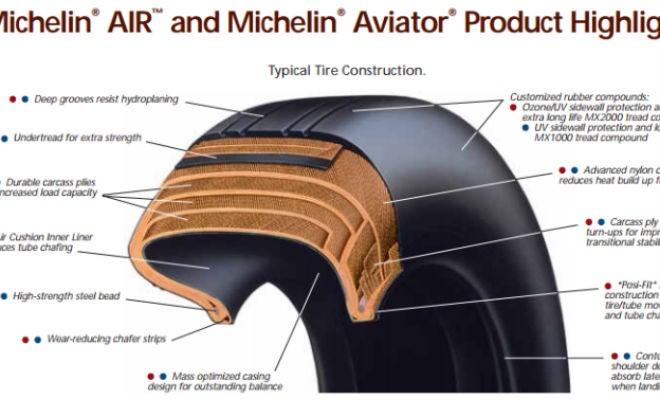
Find a cool and dry environment to keep your tires. You want to locate a place where the temperature and humidity remain consistent throughout the duration. Dips or hikes in either of these can result in premature tire aging. Storing tires in a consistently warm environment is not good for the rubber, but it’s also not good to keep tires in freezing temperatures.
Aside from sunlight, the next leading tire deteriorator is oxygen. Some things in storage require airflow to breathe and stay in good condition.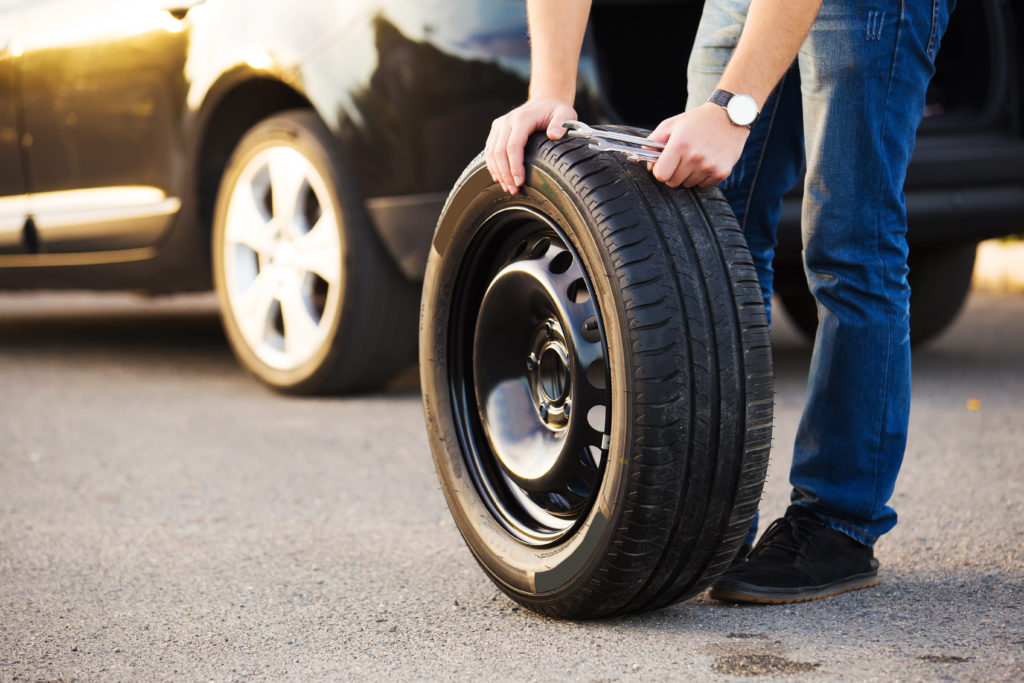 Tires, on the other hand, do better when they are vacuum sealed in plastic. An airtight space prevents oxygen from reaching the tires, slows down the oxidation process, and prevents the oil from evaporating and drying out the tires. Remember to wrap each tire individually for the best results.
Tires, on the other hand, do better when they are vacuum sealed in plastic. An airtight space prevents oxygen from reaching the tires, slows down the oxidation process, and prevents the oil from evaporating and drying out the tires. Remember to wrap each tire individually for the best results.
Once you have a storage location, it’s important to store tires correctly. Stacking tires or hanging them can cause deformities if they aren’t moved around every so often. However, sometimes you might be forced to stack tires horizontally due to space constraints. If possible, consider the following suggestions for how to store tires.

If you are storing a car for more than a couple months, consider removing the tires from the car completely. Leaving the tires on the car can cause flat spotting. If you can’t remove the tires, at the very least be sure to take the car for a ride every few months so that the tires get some use. Tires do best in service because movement keeps oil evenly distributed in the rubber, which helps prevent it from drying out.
Tires can last for several years in storage if they are stored in the right conditions.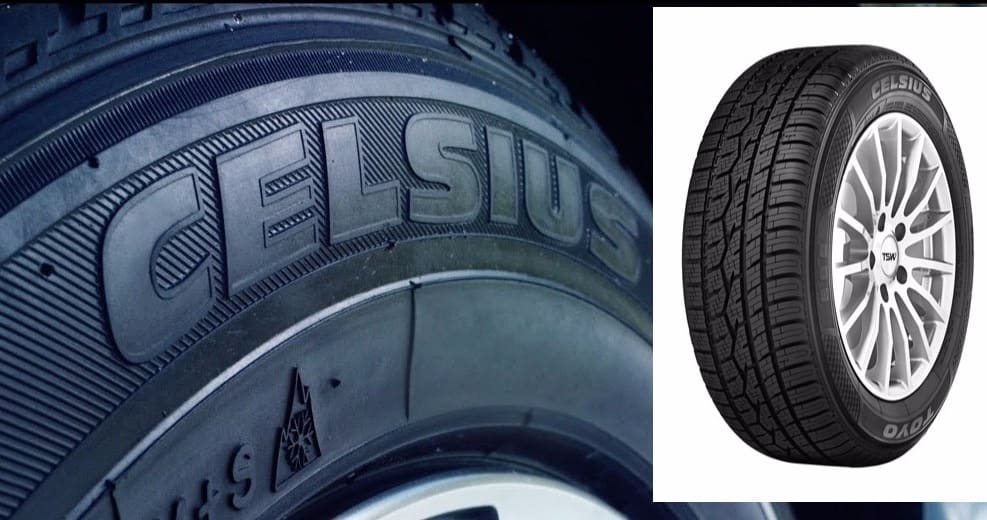 However, many tire experts recommend replacing tires six years after their production date regardless of the tread. Old tires can be compromised in other ways when the rubber compound breaks down.
However, many tire experts recommend replacing tires six years after their production date regardless of the tread. Old tires can be compromised in other ways when the rubber compound breaks down.
To give you another perspective, it’s like the difference between a brand new rubber band and one that’s been sitting in your desk for years. When you take your tires out of storage, make sure you look for signs of wear and check the date. If you are unfamiliar with what dry rot or crazing looks like, have a tire professional give your tires a once over.
We hope this tire storage guide taught you how to store tires with care. Make sure you keep yourself safe by following all the manufacturer recommendations and have your tires serviced at appropriate intervals.
Lauren Thomann has written about self storage and moving since 2015, making her our storage expert. She earned a Bachelor’s degree in English and Linguistics and has published over 150 articles on moving, storage, and home organization. She is also a contributing writer at The Spruce and Martha Stewart.
Consumer disputes over the age of tires have not subsided for several seasons. Buyers are excited that the warranty period for tires is limited to 5-6 years according to GOST, and after the expiration of this period, the rubber becomes unusable.
Is this really the case, read this article.
Manufacturers of most brands on their products set Shelf life is 5 years and service life is also 5 years .
The shelf life of a tire is the period during which it retains its performance when properly stored.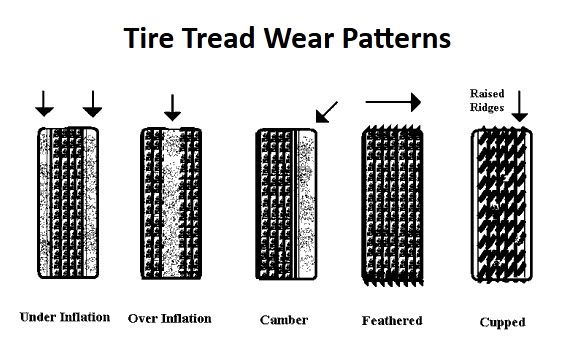
The end of this period does not mean that the tires have become unusable . A shelf life of 5 years is given by manufacturers because, by law, they cannot set a shelf life higher than the service life. Tires over 5 years of storage cannot be called damaged or defective, their technical characteristics may be slightly reduced. American researchers argue that the period of storage of "shoes" must be at least 10 years. Experts from Germany are sure that it cannot exceed 6 years.
The tire life is called the warranty period during which the manufacturer is responsible for the quality and condition of the tire if it was used for its intended purpose without violating the operating rules.
According to Russian legislation (GOST 5513, GOST 4754-97) , the service life of tires is 5 years from the date of manufacture.
How can I find out the date of manufacture of tires?
You can find out the age of tires by a special DOT code.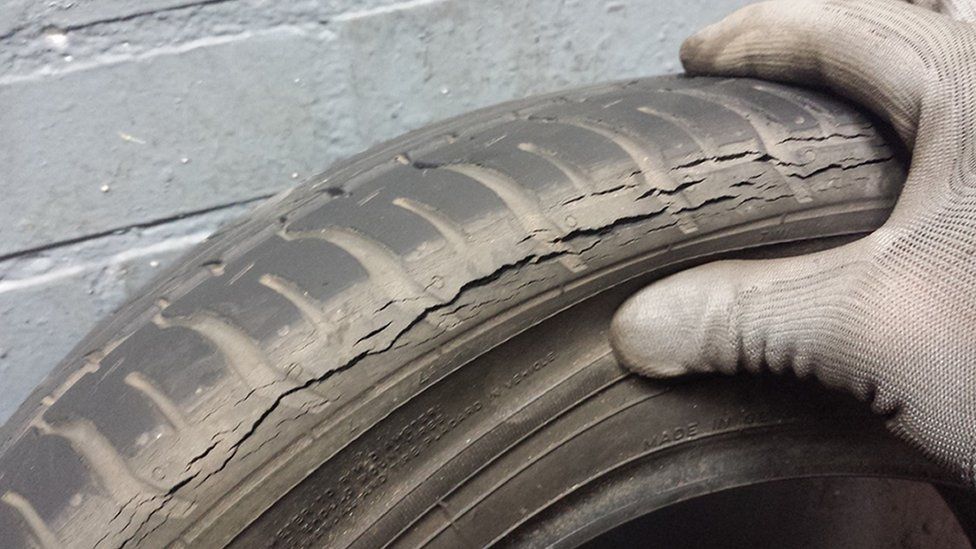 Tires manufactured after 2000 in the DOT code contain two pairs of numbers, where the first pair indicates the week number of the year, and the second pair indicates the year. Earlier tires before 2000 have 3 numbers in their composition, where the first two digits are the week number, and the last one is the year (see the transcript in the photo).
Tires manufactured after 2000 in the DOT code contain two pairs of numbers, where the first pair indicates the week number of the year, and the second pair indicates the year. Earlier tires before 2000 have 3 numbers in their composition, where the first two digits are the week number, and the last one is the year (see the transcript in the photo).
Determination of the average shelf life of a tire according to GOST and operating conditions.
- The symbol ZR denotes tires for high-speed cars. They are recommended to be used at speeds over 240 km/h. up to 6 years
- Tires with the H symbol are used at a maximum speed of 210 km/h. within 5 years.
- The sign S symbolizes the maximum permissible speed of 180 km/h. and operational period of 4-5 years.
Most tire manufacturers do not agree that tire life is limited to 5 years. Each company has its own opinion on this matter. We analyzed several of them and the information they posted on their official websites.
We analyzed several of them and the information they posted on their official websites.
Michelin
The French tire manufacturer Michelin has become famous for its active fight against the perception of the rapid aging of tires as a perishable product. Her information campaign "Tires Are Not Bananas" created a lot of noise in the automotive environment. According to the representative office, several test trials were carried out in Saudi Arabia, South Korea and Germany. As a result of testing, no difference was found between new tires and tires stored for 3 years. They were tested for various characteristics such as rolling resistance, high speed durability, etc. Tires with a year life were approximately equal in performance to 10-year unused tyres.
Michelin focuses the attention of car owners on the fact that tires are not a perishable product, their shelf life is not as important as the service life is important, starting from the date the tires are installed on the rims. It is from this moment that the tire is subjected to all tests: pressure, temperature changes, wear, contact with uneven and sharp coatings, etc.
It is from this moment that the tire is subjected to all tests: pressure, temperature changes, wear, contact with uneven and sharp coatings, etc.
Continental
On the Russian official website of Continental, we found the following information on the expiration dates of tires.
“When a tire is stored in the correct position and under the recommended conditions, it will not lose its original balanced performance for 5 years from the date of manufacture of the tire.
A properly maintained, unused tire less than 5 years old can be sold as a new tire and used normally.
Continental recommends replacing all tires (including spares) with a sidewall date greater than 10 years.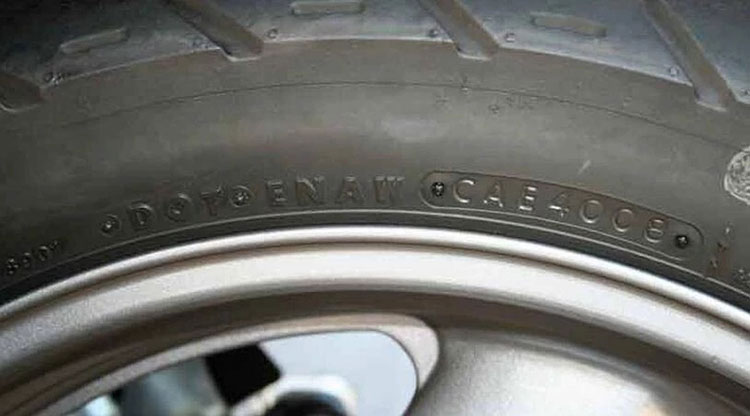
Nokian
The following information is posted on the Nokian official website:
“Tire life is not defined by law, but tires can only be considered “new” if they have been manufactured within the last five years. The recommended service life of tires is six years and the recommended maximum period is 10 years.
The opinion of our specialists, based on many years of experience, coincides with the opinion of manufacturers: the shelf life is 5 years + the service life is up to 10 years. Moreover, more "adult" tires, in our opinion, are of better quality.
To keep tires as long as possible, they are stored in compliance with all rules and recommendations. The main condition is a cool, ventilated, darkened room away from oils, paints, ozone, and heat sources.
Rubber products tend to lose their performance over the years. To prevent and slow down this process, manufacturers add polymers to the rubber compound.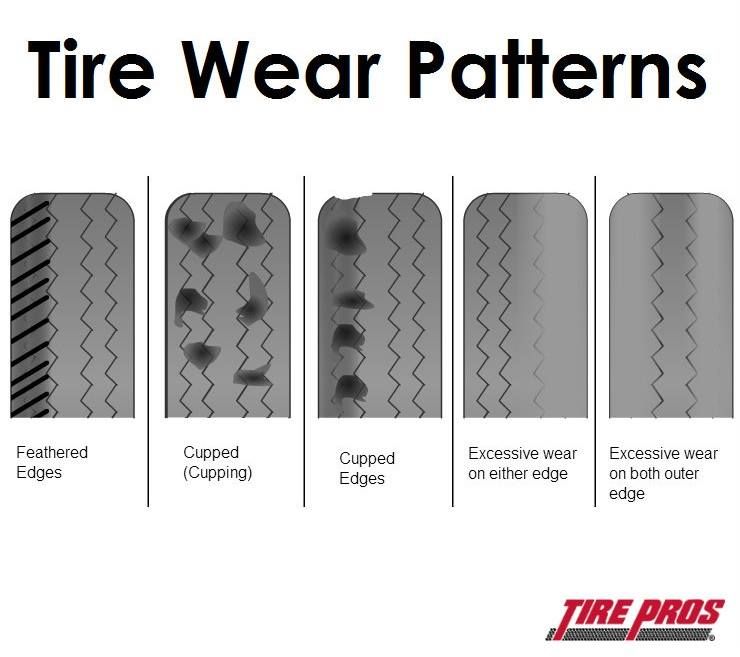 They prevent oxidative processes that occur due to the interaction of protectors with oxygen and ozone.
They prevent oxidative processes that occur due to the interaction of protectors with oxygen and ozone.
The following are the main conditions for the proper storage of tires in accordance with GOST 24779-81:
Maintaining a constant regime without sudden jumps, slight temperature fluctuations from -30°С to +35°С are allowed;
Provide a low humidity level of 50-80% in a dry, ventilated cool room;
Avoid direct sunlight, use darkened hangars, shield heat sources;
Keep away from sources of heat;
Tires should not come into contact with corrosive, copper materials.
Avoid kinking, loading or positioning on an uneven surface.
Avoid contact with oils, organic solvents, acids, alkalis, fuels and lubricants on the tire surface. It is forbidden to lay tires on a wet and dirty surface.
In the warm season, when storing tires outside, they should be covered with light-tight material and raised above ground level to ensure ventilation and prevent the occurrence of the greenhouse effect.
Storage on reflective, light and heat absorbing surfaces is prohibited.
Keep away from chemicals, oils, paints, open flames, electric motors that produce ozone.
Used tires must be washed and dried.
Tires without rims should be stored upright.
The service life depends on many factors: the load on the car, the quality of the roads, the driving style, the distance traveled, tire damage, etc. To increase their service life, follow these rules:
Check tire pressure every 2-3 weeks. With reduced pressure, tire wear increases by the equivalent of a % reduction. For example, a 15% reduction in pressure can result in a 15% reduction in service life. Inflated tires are less scary.
The wear of the front tires is always significantly higher than the rear ones, so it is recommended to swap them after some time, carefully watching the direction of the tread pattern and the direction of rotation.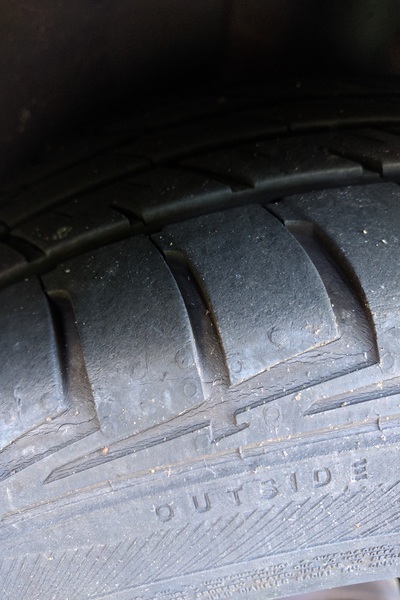
Proper alignment of tires in relation to rims. If the direction is not the same, then performance is significantly reduced.
To prevent damage to the sidewalls of tires, avoid close proximity to curbs and high ledges.
Wash off dirt from the surface of the rubber and from deep grooves with special cleaning agents.
Adhere to an even driving style without harsh brakes and quick starts.
Do not overload the car beyond the norm. 20% excess weight leads to a 30% loss of tire life.
Keep the wheels balanced and check the alignment angles annually.
The main condition for a long tire life is:
- high quality products,
- careful operation,
- proper storage of tires in the off-season,
- timely diagnosis.
The age of tires in standard storage is a minor non-determining factor that should not be taken into account when buying them.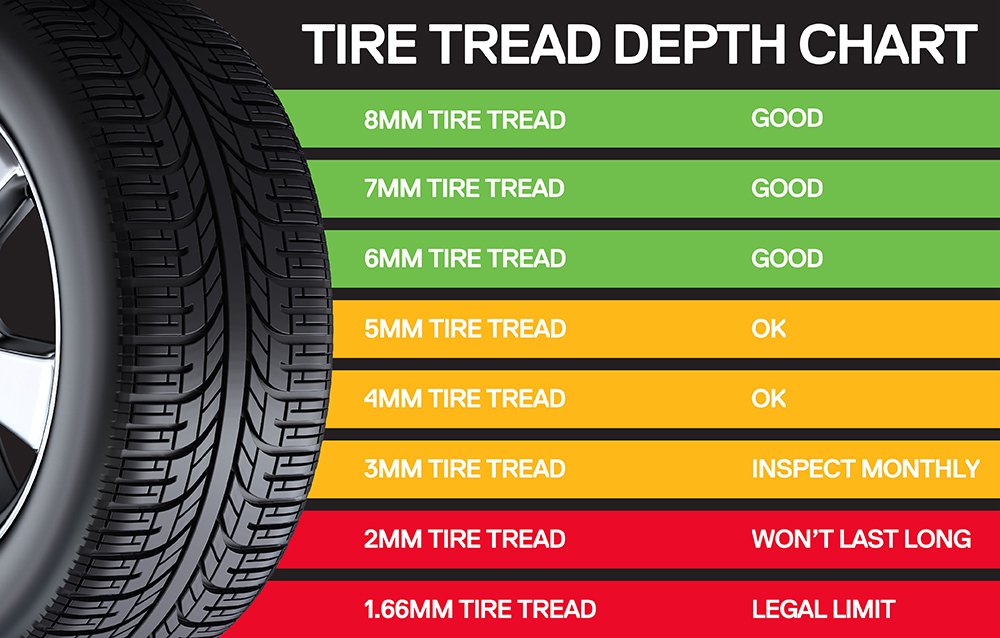
Previous article Next article
A car tire is a rubber elastic shell that is mounted on a disc rim. It is she who is in direct contact with the surface of the roadway and is directly designed to reduce small fluctuations on the roads, as well as to compensate for flaws in the trajectory of the wheels. During operation, it is subjected to heavy loads of a diverse nature, therefore it naturally has its own service life, which is influenced by a number of factors.
Shelf life - the period during which the company guarantees the possibility of using the product for its intended purpose and is fully responsible for defects that arose through its fault.
When buying tires, you need to look so that no more than three years have passed from the moment of production. The date of manufacture and any other information is very easy to find out, it is indicated on the tire label among the general information about dimensions, design, speed and load ratings.
Tire production date
Russian legislation establishes the service life of car tires under warranty in accordance with GOST 4754-97 and GOST 5513 - 5 years from the date of manufacture, but for tires, first of all, the main indicator is the quality of the product, and not the time of its use.
According to GOST, the average tire life should be calculated in the following order:
Experts recommend replacing tires before they reach their expiration date. Some motorists believe that rubber is suitable if it is rarely used, and at the same time its age is already 5-6 years old, but this is an erroneous opinion! Indeed, due to the fact that defects appear in tires during operation and storage, they are associated with its oxidation and cracking - at a critical moment, it can let you down.
Shelf life is a certain period during which the product, subject to the established rules of storage and operation, must retain all its properties. If the shelf life has expired, this does not mean at all that the product is unsuitable for use, but its technical characteristics may decrease.
Tires can age through physical and chemical processes, this hypothesis applies to tires that are not used or little used. To prevent the aging process itself, special substances are added to the rubber compound that help counteract harmful chemical compounds with oxygen and ozone. Doing so will ensure that, when stored properly, the tire will meet the definition of a new tyre.
It should be noted that the warranty shelf life is not the service life of . The storage period for five years is set, not because the tire will deteriorate after that, but because, according to the law, the manufacturer does not have the right to establish a shorter warranty period, which is protection for the end user.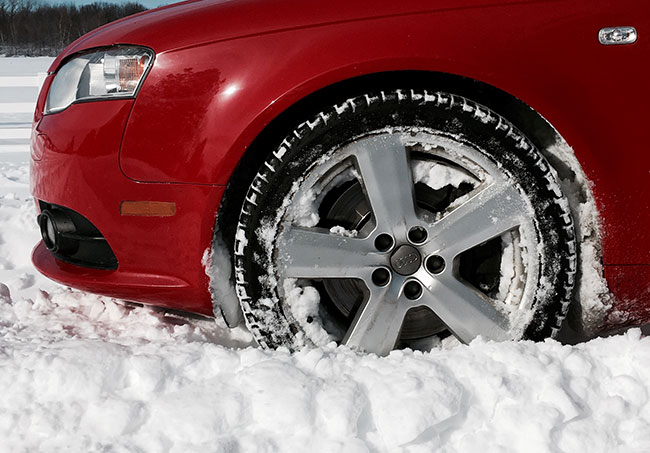
In recent years, many American experts believe that the shelf life and operation of car tires should be limited to 10 years. In turn, German experts believe that the expiration date of tires should be limited to 6 years, this also applies to new tires.
Rules and regulations for the storage of pneumatic tires according to GOST 24779-81:
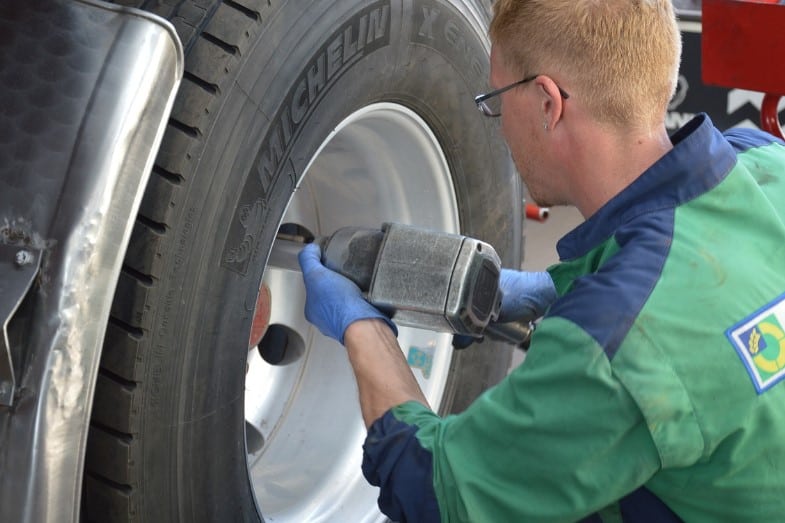
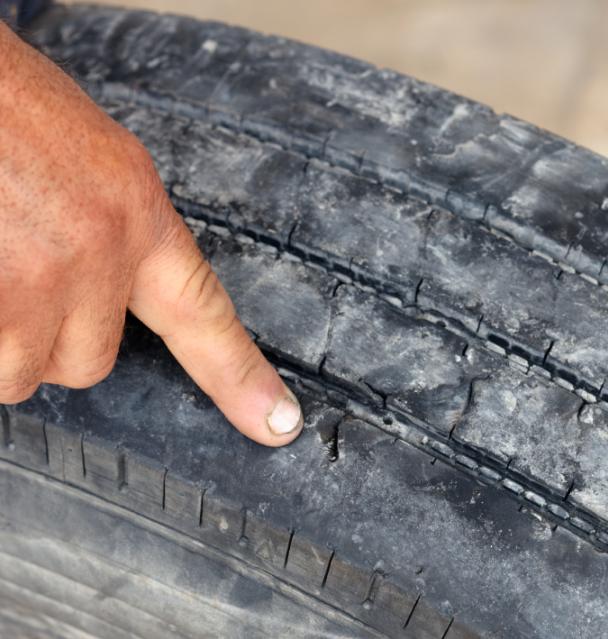
For a complete list of rules and recommendations for proper tire storage, see the article “How to store car tires”.
Well-known brands of imported tires, such as: Bridgestone, Michelin, Goodyear and Dunlop last up to 10 years or more from the date of manufacture, this period is generally accepted throughout the world. But the total shelf life and storage in the warehouse, from the date of issue, tires Continental is no more than 5 years.
Although, as we have already figured out, the storage conditions of tires mean a lot, not only new ones, but also those that were removed from the car until the next season. For example, nokian tire expiration date ranges from 3-5 years, subject to verification at least 1 time per year, after 5 years of use.
Unfortunately, the legislation does not establish the permissible storage periods for tires in a warehouse, but experts believe that a tire that has lain there for about 5 years is still equal to a new one.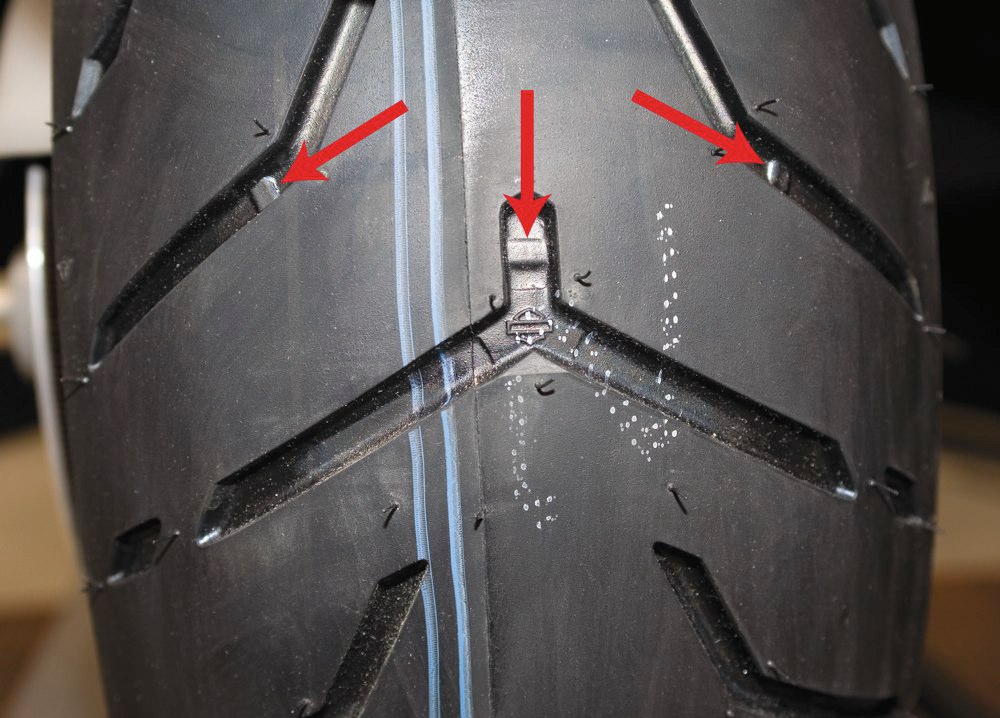
The tire life of a vehicle is the period of time during which the manufacturer gives a guarantee for tires and is fully responsible for any defects that will be detected during their operation. According to manufacturers, tires should last at least ten years, although in practice they have to be replaced approximately every 5-6 years, in some cases even less.
There are many different factors that affect the wear of car tires, the main ones are listed below:


Next, let's take a closer look at the instructions for certain actions that need to be taken in case of wear on car tires.
When diagnosing tires, in addition to the fact that it is imperative to pay attention to the degree of wear, there are also other equally important factors indicating the end of the service life.
In order to determine when the life of car tires ends with a detailed inspection, you need to pay attention to the following points:
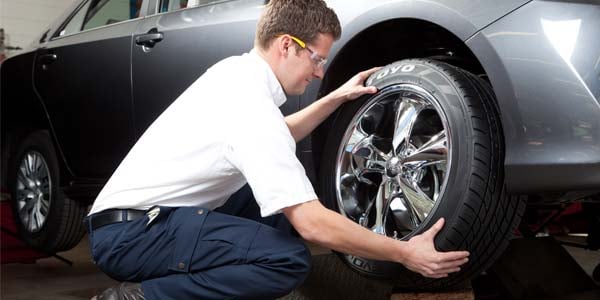 For summer tires, this parameter should be equal to more than 1.6 mm, in turn, for winter tires - more than 4 mm. If these parameters are less, then it is necessary to replace the tires. When the wear is uneven, then measurements should be taken in the area where the wear is most visible. Otherwise, if the tread edge is worn on only one side, then the camber-toe angle has been violated.
For summer tires, this parameter should be equal to more than 1.6 mm, in turn, for winter tires - more than 4 mm. If these parameters are less, then it is necessary to replace the tires. When the wear is uneven, then measurements should be taken in the area where the wear is most visible. Otherwise, if the tread edge is worn on only one side, then the camber-toe angle has been violated. 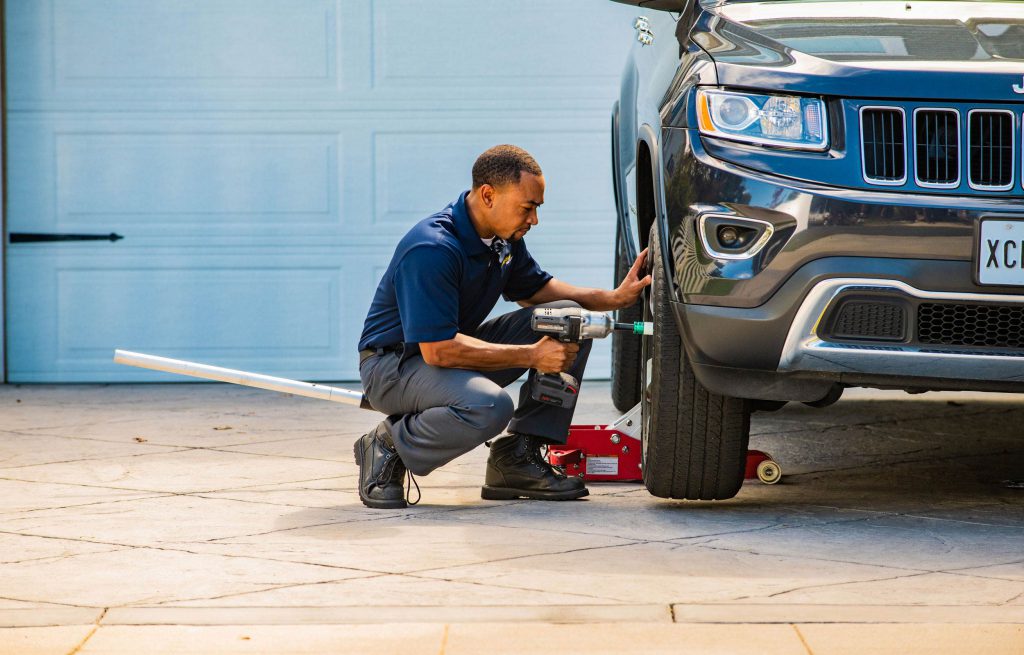
When any defects were noticed in the tires, it is recommended to carry out a replacement, and not a rescue restoration, in order to somehow extend the period of use.
To prolong the life of car tires, it is necessary to periodically diagnose them.
In order to make your tires last longer, you need to follow certain rules of use:
Since there is always more wear on the front (driving) wheels, then every 10-15 times. thousand or at the time of changing seasonal tires, it is advisable to change it in places.
Swapping front tires to rear tires
Scheme of swapping 5 car wheels
Please note that although there are tires with directional and non-directional patterns, you still cannot change the direction of rotation of the wheel. And in the second option, the front wheels must be reboarded before being installed back.
And in the second option, the front wheels must be reboarded before being installed back.
It is necessary to check if the tires are installed correctly in relation to the rims, which is usually indicated on the sidewalls of the tires, this is important, since if the tires rotate in the opposite direction to the design, all their performance will be significantly reduced in all modes of operation of the car.
Non-directional tire replacement scheme
All-wheel drive tire replacement scheme
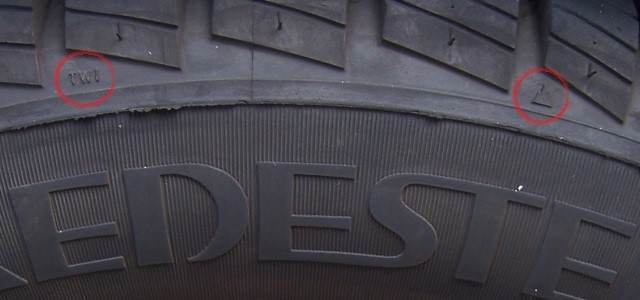
Experts recommend that you regularly check the condition of your tires, monitor pressure and tread wear. After all, it is much more profitable to fix a malfunction in the early stages than to change all the rubber later.